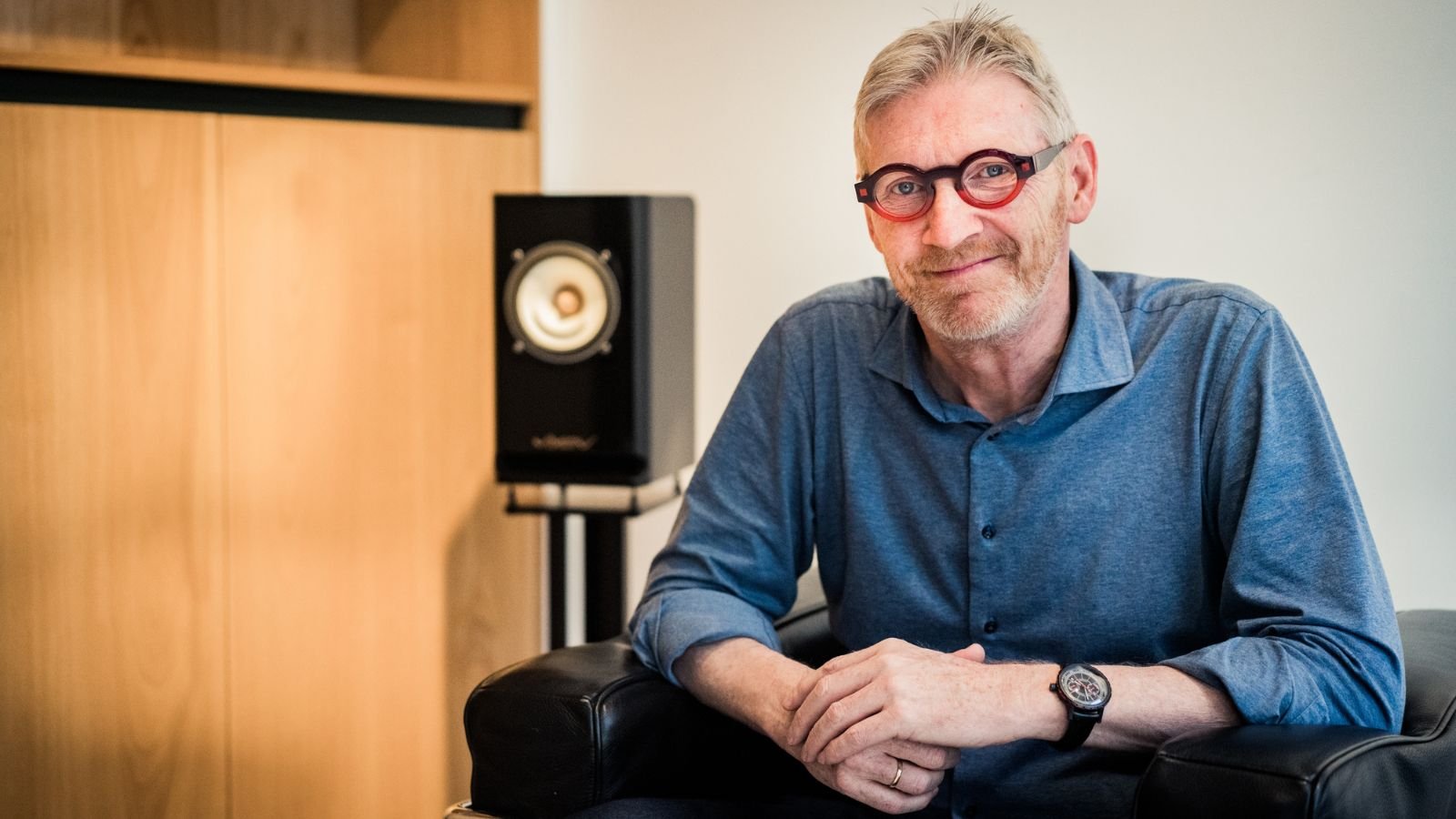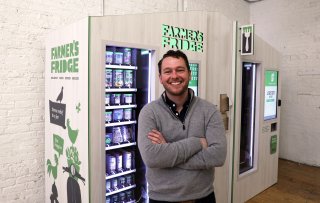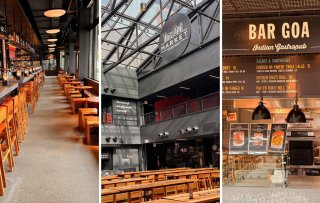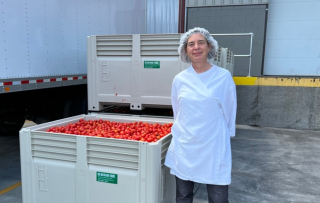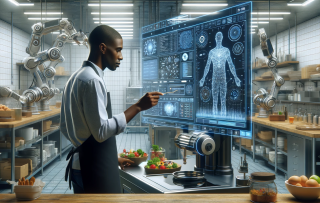In 2017, Serve Robotics, a meal courier company, was established in Silicon Valley, operating in the cities of Los Angeles and San Francisco. By 2022, the company was the first in the world to achieve the 'fourth autonomy level' for automated self-driving robots, meaning the company's delivery bots can routinely operate without any human intervention, relying on the highest degree of onboard technology to ensure safe, fast, and effective operation. Thanks to this innovation, the delivery costs are up to 65% lower than what is currently paid for professional human couriers. What’s next?
Herman Konings, a change psychologist and trend analyst, has been managing the Antwerp-based trend and future research agency Pocket Marketing/nXt since 1992. As a natural storyteller, Konings regularly writes about notable trends for Food Inspiration.
Researchers from the American investment bank Morgan Stanley have calculated that the global meal delivery market will grow by about 14% in 2024 and that this growth will continue steadily into the next decade. Considering that only 18% of all internet users worldwide use (or have used) online food delivery services, these expectations seem likely. Investors and innovators in artificial intelligence and robotics also expect growth in this sector, as they work to (re)shape the market of fully automated meal delivery.
It is to be expected that the entire food chain - from farm to fork - soon will be able to operate without any human intervention. However, in Europe the innovators don't draw their credentials from people aged 30 and older, of whom only one in seven would somewhat welcome this development; only Generation Z shows more confidence, with one in five being open to it (source: HelloFresh, 2023).
Bites by bytes only
According to HelloFresh's figures, while there may be attractive opportunities among young early adopters, the overwhelming majority of meal delivery service users are not interested in a 'bites by bytes only' plan: meal delivery that in the entire scope of production and distribution is solely created by technological aids. Moreover, with every early trend comes an early counter-trend. As robots take over the role of traditional couriers, a gap in the market emerges, driven by a desire for human connection. This gives the role of the courier the potential to develop into a new form of craftsmanship, similar to that of a household butler or housekeeper.
In various interviews with trade media, Ian Johnston, founder of the British retail advisory firm Quinine, suggests that takeout restaurants will enter a new phase in the coming years, where couriers will not only knock on front doors but also physically enter homes. Why doesn't the delivery person from Uber Eats come inside for 15 minutes? Imagine... the courier receives a one-time digital access code, puts on slippers upon entry, walks into the house, and starts placing my orders in the right spot in the fridge. Before doing so, they turn on the oven, put in a bake-off bread, activate a timer, and set the table with plates and cutlery. Then they leave quietly. When your alarm goes off, all of your groceries are stored, and the scent of freshly baked bread fills the home.
The demand for these types of services, more akin to domestic help or hotel room service than grocery delivery, already exists — as evidenced by the notable increase in the number of private chefs. The global industry for personal chef services is expected to reach a value of €12.5 billion this year. Between 2024 and 2033, this sector is expected to show an average annual growth rate of 4.2% (source: Fact.Mr). This growth in the global 'personal chefs' service category is mainly attributed to the increasing time poverty of the growing group of knowledge and service workers, and the rising demand for customized meal solutions.
The function of work
Economists from the University of Oxford have calculated that by 2050, nearly half the world's useful labor will be done by machines and artificial intelligence. The late Austrian social psychologist Marie Jahoda would not respond positively to the development of this so-called 'post-work era.' In several extensive studies, she attributes that besides the dominant function of earning money, there are five other latent qualities to work, which only become apparent when work is absent. A job provides (1) structure and (2) variety, preventing monotony, thus avoiding listlessness, irritations, relational frictions and psychosomatic illnesses. (3) The workplace is a place to socialize; the unemployed often struggle with loneliness and isolation. Work contributes to (4) self-actualization (strengthening one's ego and self-image) and (5) societal engagement (being part of a collective goal).
Jahoda is just one of many scholars who do not share the post-work optimism of technology advances. Among the core believers, who do believe that the fourth industrial revolution will benefit both humans and society, there are two camps. One group believes that robots and smart technology will create more information and communication technology (ICT) jobs than they eliminate, while the other is convinced that a widespread society of post-workers, from all demographic categories, offers a unique opportunity to elevate humanity to a higher level.
In the latter case, global politics will have to answer in the coming years if the substantial amount of money saved by employing cost-effective robots and machines will flow back to the general population, either in the form of a basic income for everyone or be absorbed by a handful of tech powerhouses (mainly in the U.S. and China). An exercise in 'cathedral thinking' – looking to the very long term future, as the cathedral builders in the Middle Ages did – is certainly appropriate here.
